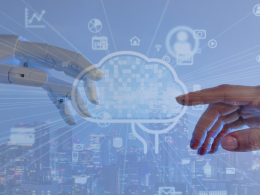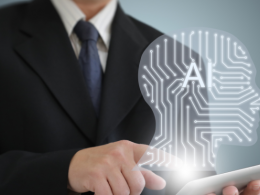Throughout history, the relentless force of natural disasters has loomed as a formidable threat to both human lives and the places we call home. The destructive power of hurricanes, earthquakes, wildfires, and floods has left a trail of devastation and chaos in its wake.
However, the tides are changing. In recent years, a remarkable shift has occurred—a fusion of cutting-edge technology and human ingenuity. This fusion takes the form of artificial intelligence (AI) and is altering the very landscape of disaster prediction and mitigation.
In this blog, we embark on an awe-inspiring journey into the heart of AI-powered innovations that are not just changing the game; they’re rewriting the rulebook entirely.
Prepare to be captivated as we explore how these remarkable technologies are redefining how we foresee and respond to the unpredictable forces of nature.
The Power of AI in Natural Disaster Prediction
AI has ushered in a profound transformation within the realm of natural disaster prediction by harnessing the vast processing capabilities of machines. This transformative shift has unlocked a new era of proactive disaster management and response.
Let’s explore the ways AI is making a significant impact in this field:
1. Advanced Data Analysis
At the heart of AI’s prowess in natural disaster prediction lies its ability to conduct sophisticated data analysis. AI algorithms are adept at sifting through immense volumes of historical and real-time data, drawn from diverse sources including satellites, weather stations, and ground-based sensors.
By tirelessly scanning this data, AI can uncover subtle patterns and anomalies that might otherwise elude human detection. This capacity empowers early detection of potential disasters, allowing for timely intervention and risk mitigation.
2. Improved Weather Forecasting
Machine learning models are revolutionizing weather forecasting by perpetually scrutinizing atmospheric conditions. These models process vast amounts of data, enabling them to provide increasingly accurate weather forecasts.
Consequently, AI-driven weather forecasting is instrumental in providing timely warnings about extreme weather phenomena such as hurricanes and cyclones, affording communities precious time to prepare and evacuate if necessary.
3. Earthquake Early Warning Systems
AI is enhancing earthquake preparedness through the deployment of seismic sensors driven by machine learning algorithms. These sensors are engineered to detect the initial, less destructive seismic waves that precede more devastating tremors.
By recognizing these early warning signs, AI-triggered alerts can be issued mere seconds to minutes before the more destructive waves hit, furnishing individuals and communities with critical time to seek shelter and safeguard themselves.
4. Wildfire Prediction and Monitoring
AI is proving invaluable in predicting and monitoring wildfires, which are increasingly devastating. AI algorithms analyze data streams from various sources, including satellites, drones, and ground-based sensors. By meticulously processing this data, AI models forecast the likelihood and potential spread of wildfires.
Additionally, AI supports the real-time monitoring of fire behavior, identifying hotspots and enabling more efficient allocation of firefighting resources.
5. Flood Prediction and Management
AI-driven flood models are bolstering our ability to predict and manage floods. These models take into account numerous factors, including rainfall patterns, soil saturation levels, and topographical data.
By synthesizing this information, AI can predict when and where floods might occur, facilitating timely evacuations and the implementation of flood control measures.
Mitigating the Impact of Disasters with AI
However, AI’s impact goes beyond mere prediction. It plays an equally vital role in mitigating the impact of natural disasters.

1. Optimizing Evacuation Plans
AI algorithms excel at generating evacuation plans that prioritize safety and efficiency. These plans consider factors like traffic congestion and optimal routes, ensuring the swift and secure movement of people during evacuations.
2. Resource Allocation
Machine learning aids in the intelligent allocation of resources during disaster response efforts. By analyzing real-time data and assessing demand, AI helps allocate resources such as emergency responders, medical supplies, and shelter locations more effectively.
3. Disaster Recovery
AI-driven drones and robots are invaluable assets during the aftermath of disasters. They assist in swiftly assessing damage to infrastructure, identifying areas requiring immediate repair or attention, and expediting the recovery process. These technologies are also proficient in tasks like debris removal, further accelerating the restoration of affected areas.
4. Communication and Coordination
AI-driven chatbots and communication systems facilitate effective communication among disaster response teams, government agencies, and the affected population. These systems play a pivotal role in disseminating critical information, coordinating relief efforts, and addressing inquiries during crises.
Challenges and Ethical Considerations
Let’s elaborate on the challenges and ethical considerations associated with AI in disaster management:

1. Data Privacy Concerns
One of the foremost challenges in deploying AI for disaster management is the protection of data privacy. AI systems rely heavily on vast amounts of data, often collected from various sources, including individuals’ personal information.
When handling sensitive data, such as location data during evacuations or health records during emergencies, there is a pressing need to ensure that data is collected, stored, and used in a manner that respects individuals’ privacy rights. Striking the right balance between utilizing data for disaster response and safeguarding privacy is crucial.
2. Algorithmic Bias
Algorithmic bias refers to the potential for AI systems to produce results that systematically disadvantage certain groups or communities. In the context of disaster prediction and response, bias can manifest in various ways.
For example, if an AI model is trained predominantly on data from one demographic group, it may not accurately assess the needs or vulnerabilities of other groups during a disaster. Bias can also occur in the allocation of resources or in decision-making processes. It is essential to actively address and mitigate bias in AI models to ensure fair and equitable disaster management.
3. Transparency and Accountability
Transparency is vital in ensuring that AI systems used in disaster management are trustworthy and accountable. It’s important for stakeholders, including the public, to understand how AI algorithms make predictions, allocate resources, and influence decision-making during crises.
Ensuring transparency can enhance public trust, facilitate oversight, and enable experts to scrutinize and improve AI systems continuously. Moreover, accountability mechanisms should be in place to address errors, malfunctions, or unintended consequences that may arise from AI-driven decisions.
4. Ethical Decision-Making
AI systems often make decisions autonomously or provide recommendations to human decision-makers. Ethical considerations in AI decision-making processes become paramount.
Who is responsible for the actions of AI systems during disasters?
What ethical guidelines or principles should guide AI’s role in disaster management?
Answering these questions is essential to ensure that AI operates in alignment with ethical norms and values, especially when lives and well-being are at stake.
5. Accessibility and Equity
While AI has the potential to significantly improve disaster management, there is a risk that it may not be accessible to all communities equally. Vulnerable populations, including those with limited access to technology or resources, should not be left behind.
Ensuring that AI-based disaster management solutions are inclusive and reach all communities, regardless of socioeconomic factors, is a crucial ethical consideration.
6. Long-Term Sustainability
AI systems used in disaster prediction and mitigation should not be viewed as short-term solutions. Ensuring their long-term sustainability involves ongoing maintenance, updates, and adaptation to changing environmental conditions and disaster scenarios.
Ethical considerations extend to how AI systems are sustained and the equitable distribution of benefits over time.
The integration of AI in natural disaster prediction and mitigation represents a significant leap forward in safeguarding communities and minimizing the impact of these catastrophic events. As technology continues to advance, we can expect even more sophisticated AI solutions that will help us better anticipate, respond to, and recover from natural disasters.
While we cannot prevent these events entirely, AI offers a glimmer of hope in our ongoing battle against the forces of nature.
Ready to dive deeper into the world of Data Science and AI? Join Accredian’s Executive Program in Data Science & AI and shape the future of your career.
 Pin
PinEquip yourself with the knowledge and skills to thrive in the data-driven future. Your transformative learning experience awaits!






